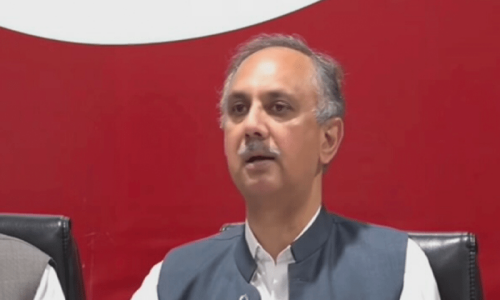LAHORE, Dec 31: The year 2007 was the bloodiest and most difficult for journalists in South Asia with Pakistan topping the death tally. Media Commission, Pakistan, president I.A.Rehman, secretary-general Najam Sethi, coordinator Husain Naqi and South Asia Free Media Association (Safma) secretary-general Imtiaz Alam stated this while releasing the media reports for Pakistan and South Asia here on Monday.
They said 25 journalists and media workers were killed in South Asia during 2007. Pakistan topped the table with the death of seven journalists, followed by six in Sri Lanka, five in Afghanistan and three in Nepal in the line of duty. Three media workers lost their lives in India and one in Afghanistsn.
They said the media boom had exposed journalists to various threats. Some 21 journalists had been killed since Musharraf took over in 1999. Pakistan had become one of the most dangerous places for journalists since the US-led war on terror began. Having taken a string of measures to rein in the media since March 12 sacking of the chief justice, Musharraf stripped media of its liberties by promulgating two ordinances in November- one for print media, blacking out TV networks and threatening broadcasters with jail terms. Muzzling the media with emergency, he accused, journalists of enhancing “the atmosphere of uncertainty”.
They said tremendous growth of the electronic media in Pakistan had made cameramen and reporters more susceptible. Cameras of television channels were insured but the photographers using them lacked the insurance cover. With elections coming up the situation can only worsen. There will be stages, rallies, meetings and journalists had to be there. Media owners should provide life insurance, safety equipment and specialised conflict-reporting training. Media boom required a rethink by the government, the people, the media owners and journalists on several fronts.
They said the journalists had also suffered immensely in the ongoing conflict in Afghanistan and Sri Lanka. In Afghanistan, especially in the Pakhtun belt across the border between Pakistan and Afghanistan, the journalists had to pay heavily amid the crossfire of adversaries. They became victim to the guns of not only Taliban-Qaeda extremists, but also of various other forces, including the warlords and ISAF. The Afghan authorities also showed short temper in tolerating criticism. The most worrisome was the introduction of illegal FM radio stations promoting hate and violence in the tribal areas of Pakistan and Afghanistan.
In Sri Lanka, as the internecine ethnic conflict grew out of proportion, media persons and outlets became more vulnerable to conflicting pressures. The government of President Mahinda Rajapakse and the Liberation Tigers of Tamil Eelam competed in enforcing restrictions on the media. However, Nepal and Bangladesh presented a mixed picture due to a difficult and tenuous transition. If Maldives remained, as usual, a difficult country for journalists since many decades, Bhutan presented a case of healthy but careful opening for media with the advent of constitutional monarchy and introduction of democracy, they said.
The most encouraging feature of 2007 was the valiant resistance put up by the media and the civil society against the curbs on freedom of expression and the right to know in Pakistan, Afghanistan, Sri Lanka and Maldives.
The bodies of working journalists, in particular, deserve our praise for putting up protracted resistance to the curbs imposed on media. The solidarity expressed by the media community across South Asia and world-wide was worth noting. As the year 2007 comes to an end, the media community should continue to keep up the banner of press freedom in our region, they said.
The government had imposed restrictions on live coverage by electronic media due to its deterrent effect after it telecast the scenes showing policemen maltreating chief justice Iftikhar Muhammad Chaudhry. It would not have been in the situation it was at present with respect to assassination of former prime minister Benazir Bhutto in case it had not done so, they said.
The restriction on the media to broadcast only the official results of elections would give credibility to allegations of rigging. They said all the political parties should sign the charters of freedom of media formulated by Safma.—Reporter















































Dear visitor, the comments section is undergoing an overhaul and will return soon.